INTERTWINGLED – The Role of the Rug in Arts, Crafts and Design

Dal 21 March 2022 al 4 September 2022
Roma
Luogo: Galleria Nazionale d’Arte Moderna e Contemporanea
Indirizzo: Viale delle Belle Arti 131
Orari: Dal martedì a domenica dalle 9 alle 19. Ultimo ingresso 45 minuti prima della chiusura
Curatori: Martí Guixé e Inga Knölke
Enti promotori:
- MiC - Ministero della Cultura
Costo del biglietto: intero € 10, ridotto € 5, cittadini UE di età compresa tra i 18 e i 25 anni € 2. Gratuito under 18 e altre categorie secondo normativa vigente
Telefono per informazioni: +39 06 32298328
E-Mail info: gan-amc@beniculturali.it
Sito ufficiale: http://lagallerianazionale.com
OPENING lunedì 21 marzo alle 18
Abbracciando questa visione, INTERTWINGLED The Role of the Rug in Arts, Crafts and Design, la mostra a cura di Martí Guixé e Inga Knölke che inaugura alla Galleria Nazionale il 21 marzo 2022 (opening ore 18-21), costituisce un unicum sorprendente e propone per la prima volta una lettura affascinante, aperta e dirompente del mondo interconnesso in cui viviamo. Dal Salone Centrale alla Sala delle Colonne e attraverso puntuali rimandi alle opere di Time is Out of Joint, la mostra esplora il tappeto e l’arazzo in campi differenti – dall'arte, all'artigianato, al design – e lo proietta in ambiti più concettuali, stabilendo nuove relazioni che dialogano con idee come il nomadismo, il real estate, le reti visibili e invisibili, i network digitali, l’ipertesto, la decentralizzazione del potere, la narrazione non lineare e il potere insito nel concetto di unione.
Tappeti e arazzi sono composti materialmente da una moltitudine di fili e nodi che si intrecciano per creare disegni e superfici. Il tappeto, quindi, è al tempo stesso metafora e interfaccia di un dispositivo che mostra-e-nasconde la trama e l’ordito da cui è originato. Tappeti e arazzi possono essere interpretati come modi di occupare lo spazio in senso fisico e metaforico, poiché l'intreccio è anche composto, restando nella metafora, da relazioni politiche, economiche e sociali. La rete come ossatura, come palinsesto, come proto-configurazione di un tappeto o di un arazzo, è anche la proto-configurazione della nostra società e della nostra cultura. Ed è solo adottando questo pensiero sistemico, che si nutre di connessioni, che possiamo comprendere il nostro ecosistema materiale e culturale a partire dalle piccole abitudini, fino alle grandi decisioni.
«INTERTWINGLED – nelle parole della Direttrice della Galleria Nazionale Cristiana Collu – non è solo una densa e stratificata etnografia del design, è un viaggio in molte dimensioni, che intreccia la nostra esperienza con quello che sappiamo e che ancora dobbiamo scoprire, insieme a ciò che non vediamo ma dovremmo sapere immaginare. Visitare la mostra sarà come fare un salto nella simultaneità, un salto che scarta l’ovvio e trova lo stupore, accelera, rallenta, cambia ritmo, riprogetta e ricrea».
Attraverso l’esposizione di oltre 80 opere di pittura, fotografia, design e artigianato, il progetto espositivo di Martí Guixé e Inga Knolke, concepito come un’unica installazione, presenta le sperimentazioni tessili di artisti come Carla Accardi, Antonio Corpora, Gastone Novelli, Bice Lazzari, Antonio Sanfilippo, arazzi che decorarono gli interni delle turbonavi del Novecento, opere come Cromogramma di Renata Boero, Mappa di Alighiero Boetti, Sole scucito di Maria Lai, i collage di Eduardo Chillida, Max Bucaille e Jirì Kolar, le pratiche performative di Jana Sterback e Egill Sæbjörnsson, elementi di designer come Marion Baruch, Ettore Sottsass, Aldo Rossi, Alessandro Pedretti, Italo Rota, Nani Marquina, fino ad arazzi, tappeti e fazzoletti di guerra realizzati dalle donne afghane.
Le opere in mostra sono di: Carla Accardi, Saâdane Afif, Maryam Akhondzada, Roberto Aloi, Giacomo Balla, Marion Baruch, Gastone Biggi, Renata Boero, Alighiero Boetti, Shannon Bool, Dirk Braeckman, Max Bucaille, Giuseppe Capogrossi, Giorgio Ceretti, Eduardo Chillida, Enrico Ciuti, Cristophe Cuzin, Giorgio de Chirico, Michele De Lucchi, Mario De Luigi, Fortunato Depero, Pietro Derossi, Lia Drei, Isabella Ducrot, Alice Eberever, Fabrizio Felici, Lucio Fontana, Silvia Giambrone, Martí Guixé, Klaus Haapaniemi, Kimsooja, Inga Knölke, Jirì Kolar, Maria Lai, Bice Lazzari, Anna Maria Maiolino, Malika, Javier Mariscal, Nani Marquina, Giuseppe Micali, Ariadna Miquel, Gastone Novelli, Alberto Olmo, Achille Pace, Claudio Parmiggiani, Alessandro Pedretti, Jackson Pollock, Aldo Rossi, Riccardo Rosso, Italo Rota, Joaquim Ruiz Millet, Egill Sæbjörnsson, Antonio Sanfilippo, Corrado Sassi, Daniel Schwartz, Ettore Sottsass, Jana Sterback, Massimo Uberti, Patricia Urquiola, Stefano Ussi, Emilio Vedova.
Martí Guixé (Barcelona, 1964) è un designer, formatosi a Barcellona e a Milano, il cui lavoro trascende i confini abituali di questa disciplina; tra i musei in cui ha esposto ricordiamo il MoMa di New York, il MACBA di Barcellona, la Triennale di Milano, il MART di Rovereto, il Centre Pompidou di Parigi, il Mudac di Losanna e la Galleria Nazionale d’Arte Moderna e Contemporanea di Roma.
Inga Knölke (Hannover, 1965) è una fotografa con base a Berlino e a Barcellona e a capo del progetto Imagekontainer. Ha studiato fotografia alla Lette Foundation di Berlino, è laureata in Scienze Culturali e Comunicazione Estetica all’Università di Hildesheim.
SCARICA IL COMUNICATO IN PDF

-
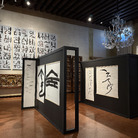 Dal 8 November 2025 al 11 January 2026
Venezia | Museo Correr
Dal 8 November 2025 al 11 January 2026
Venezia | Museo Correr
CARATTERI. Calligrafia e tipografia: Corea del Sud e Stati Uniti
-
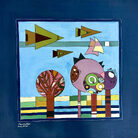 Dal 8 November 2025 al 22 February 2026
Brescia | Museo di Santa Giulia
Dal 8 November 2025 al 22 February 2026
Brescia | Museo di Santa Giulia
Material for an Exhibition. Storie, memorie e lotte dalla Palestina e dal Mediterraneo
-
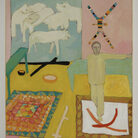 Dal 8 November 2025 al 18 January 2026
Perugia | Perugia, Spoleto e Gubbio
Dal 8 November 2025 al 18 January 2026
Perugia | Perugia, Spoleto e Gubbio
Mimmo Paladino. Antologica
-
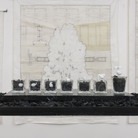 Dal 7 November 2025 al 25 January 2026
Roma | Museo Carlo Bilotti Aranciera di Villa Borghese
Dal 7 November 2025 al 25 January 2026
Roma | Museo Carlo Bilotti Aranciera di Villa Borghese
Silvia Scaringella. Deus sive natura
-
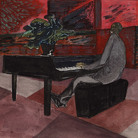 Dal 5 November 2025 al 1 March 2026
Asti | Palazzo Mazzetti
Dal 5 November 2025 al 1 March 2026
Asti | Palazzo Mazzetti
PAOLO CONTE. Original
-
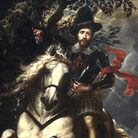 Dal 28 October 2025 al 15 February 2026
Brescia | Pinacoteca Tosio Martinengo
Dal 28 October 2025 al 15 February 2026
Brescia | Pinacoteca Tosio Martinengo
Peter Paul Rubens. Giovan Carlo Doria a cavallo


